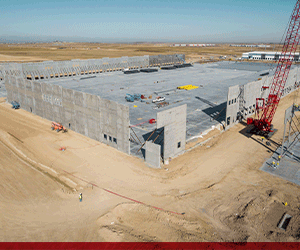Amid supply chain, shipping, and labor challenges, more consumers are expected to return to brick-and-mortar stores for annual gift purchases this holiday season, with in-store sales expected to jump significantly compared to 2020. According to CBRE’s annual Holiday Trends Guide, shoppers are expected to put gift cards at the top of the gift-giving list in order to avoid package delivery delays and in-store merchandise shortages, due to well-publicized supply chain challenges.
“The tradition of in-person shopping is poised to make a big comeback this holiday season. We are anticipating strong foot traffic at places like Park Meadows, Cherry Creek and Denver Premium Outlets. E-commerce sales are also expected to rise. Stores that combine a physical presence with online in an omnichannel approach will be the best positioned to connect with shoppers,” said Jon Weisiger, senior vice president with CBRE in Denver specializing in retail services.
Holiday retail sales figures are comprised of U.S. retail sales in November and December, excluding auto, gas, and restaurants. Various sources1 forecast total holiday sales to increase between 7% and 10.5% this year. Based on U.S. Census Bureau data and a range of industry estimates, CBRE anticipates an increase of 8.4% from last year to more than $800 billion. Brick-and-mortar retail sales, which were essentially flat last year, when COVID concerns dissuaded some shoppers from venturing out, are expected to rise by 8%, a 10-year high, as shoppers return to stores. E-commerce will expand as well, rising between 10% and 15%, according to various industry estimates.
A National Retail Federation (NRF) survey shows that consumers plan to make more in-store purchases in most categories, including department stores, discount stores, grocery, outlets and small shops.
But keeping the shelves stocked won’t be easy for retailers.
With supply chain bottlenecks and national warehouse vacancy at a historic low of 3.6%, retailers will have to be prepared to avoid inventory shortages. The ratio of retailers’ inventory levels to sales plummeted this year to 1.10 in August – compared to 1.47 prior to COVID, according to data from the Federal Reserve Bank of St. Louis.
Many retailers are turning to costly air freight to get more products to locations on time. In most cases, consumers can expect to see these rising transportation and supply chain costs reflected in higher prices at the checkout counter.
In addition, the holiday season is typically a massive hiring period for the retail industry, but labor shortages loom. As of August, there was an estimated 1.2 million job openings in the retail trade, according to the US Bureau of Labor Statistics, a rise of 62% year-over-year. Many smaller retailers may struggle to find the labor they need to handle the holiday rush.
“There will be challenges for retailers, but those that are the most creative in their product offerings and disciplined in their supply chain strategies will be well-positioned for a major boost this holiday season,” said Brandon Isner, head of Americas Retail Research for CBRE. “For consumers, many traditional shopping practices were put on hold last year or significantly changed. We anticipate that the retail center will regain prominence with shoppers looking for the experiences they missed, but consumers should also expect prices to be a bit steeper.”









